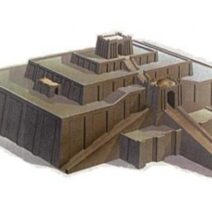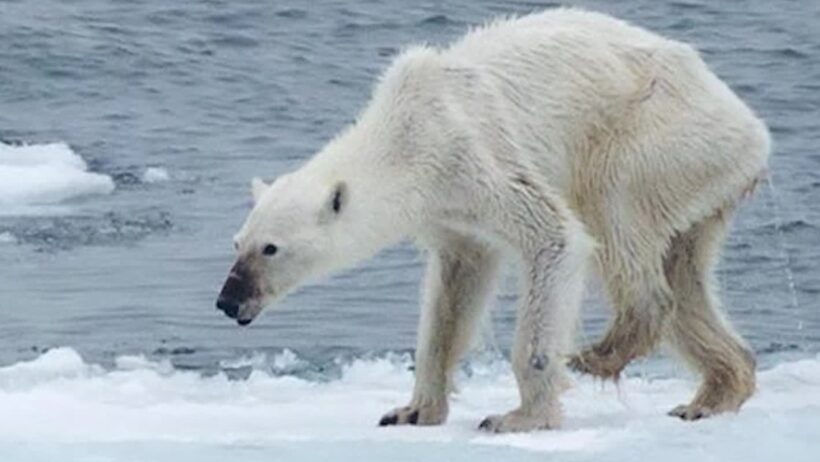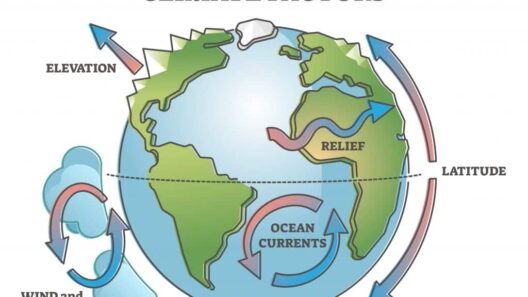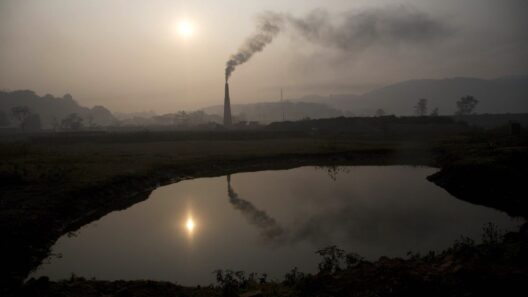Climate change is an omnipresent threat to ecosystems across the globe, but few species exhibit the immediate plight as starkly as the polar bear. These majestic mammals, synonymous with the icy expanses of the Arctic, are not merely symbols of wilderness; they are key indicators of environmental health. As climate change accelerates, its impacts reverberate through their lives, threatening their existence and the delicate balance of their ecosystem.
To comprehend the nuanced relationship between polar bears and climate change, one must first understand their habitat. The Arctic is a unique biome characterized by its frigid temperatures, expansive ice sheets, and rich biodiversity. Polar bears rely on sea ice as a platform for hunting seals, their primary prey. The decline of this ice, brought on by rising global temperatures and melting glaciers, has profound implications for their survival.
The phenomenon of melting sea ice is a direct consequence of climate change. Scientists have identified a disturbing trend over the past several decades; Arctic sea ice continues to dwindle at an alarming rate. The Intergovernmental Panel on Climate Change (IPCC) reports that, in the last 40 years, Arctic sea ice extent has decreased by approximately 40%. This decline not only constricts the hunting grounds available to polar bears but also disrupts their migratory patterns. The bears are increasingly forced to swim longer distances in search of stable ice, leading to exhaustion and, in some instances, drowning.
Moreover, the reduction in sea ice alters the entire food web within the Arctic ecosystem. As seals become less accessible, polar bears are forced to adapt their hunting strategies. Some researchers have documented instances of malnutrition among polar bears due to food scarcity, which has resulted in diminished body condition and lower reproductive success. Emaciated polar bears, once a rare sight, have become emblematic of the devastating impact of climate change on these iconic animals.
The multifaceted consequences of climate change extend beyond the immediate loss of habitat and food sources. It fosters a myriad of challenges pertaining to polar bear reproduction. Female polar bears require stable ice platforms to build dens for their cubs. Climate change has resulted in inconsistent snow and ice conditions, complicating this crucial process. Pregnant females face added stressors, such as prolonged fasting periods while searching for food, which can jeopardize the health of both mothers and their cubs. As a result, cub mortality rates have increased significantly, further jeopardizing the population stability of polar bears.
Another critical aspect of climate change’s influence is its impact on polar bear behavior and social structure. As their environment becomes increasingly inhospitable, polar bears exhibit heightened aggression and competition for dwindling resources. Competition for food can lead to increased conflict among bears, disrupting social hierarchies and further complicating their survival strategies. These behavioral changes are alarming indicators of a species under siege, grappling with the repercussions of a warming planet.
Furthermore, the melting of Arctic ice encapsulates broader implications for global climate systems. The Arctic acts as a thermostat for the Earth, influencing weather patterns and ocean currents. As sea ice diminishes, it contributes to the release of methane, a potent greenhouse gas trapped beneath the ice. This cyclical process perpetuates climate change, creating a feedback loop where the plight of polar bears is intricately linked to global warming as a whole.
Efforts to combat climate change are paramount for the preservation of polar bears. International treaties and local regulations aimed at reducing greenhouse gas emissions are crucial. However, conservation efforts also require a multifaceted approach that takes into account the complex interactions between polar bears and their environment. Establishing protected marine areas, monitoring bear populations, and fostering community-led initiatives are essential steps toward ensuring a brighter future for these creatures.
The plight of polar bears is not an isolated issue; it is a window into the broader environmental crisis. The effects of climate change reverberate throughout the globe, and the consequences of inaction will be felt far beyond the Arctic Circle. Each individual’s choices — from reducing carbon footprints to advocating for sustainable practices — contribute to a collective effort to mitigate these impacts. Engaging local communities and educating future generations about the intrinsic connection between climate health and wildlife is integral to fostering stewardship for the planet.
In conclusion, the polar bear stands as a poignant symbol of the realities of climate change. The ongoing decline of their habitat, coupled with the escalating challenges they face, mandates immediate action. Preserving polar bears is not merely about saving a single species; it represents a broader commitment to safeguarding our environment against the whims of climate change. As stewards of the Earth, it is our responsibility to heed the warnings delivered by these majestic creatures and take decisive steps to ensure their survival. Polar bears are not just relics of a frigid past; they are the bellwethers of an uncertain future, urging humanity to reevaluate its relationship with the planet.







